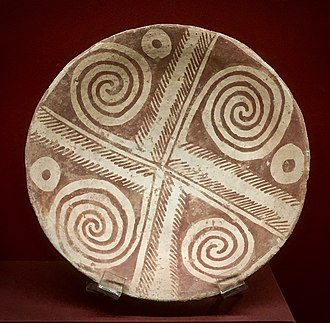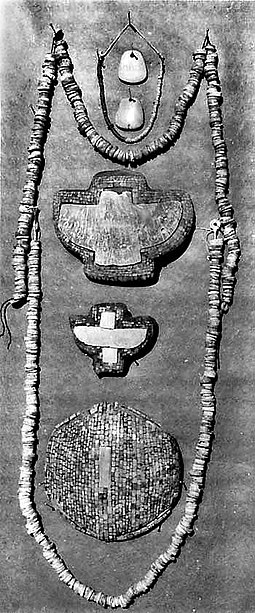advertisement
1 May 2023
Arizona is home to the largest American Indian population currently in the United States. The history of native peoples in Arizona is vast, complex, and likely much of it is lost to history. Today’s spotlight is on the Hohokam culture, a pre-Columbian Native American civilization that inhabited parts of modern-day Arizona, United States. They were known for their advanced agricultural techniques, innovative architecture, and complex social organization.
The Hohokam civilization emerged around 200 B.C. and lasted until approximately 1450 A.D. Their civilization was centered around the Salt and Gila Rivers in present-day Arizona, and their territory extended from modern-day Phoenix to the Mexican border. They lived in settlements ranging from small villages to large cities, with the largest city being present-day Phoenix.
 One of the most notable characteristics of the Hohokam civilization was their sophisticated agricultural practices. They developed an extensive canal system that allowed them to irrigate crops and grow a variety of plants, including corn, beans, squash, and cotton. The Hohokam were able to sustain their population growth through these agricultural practices, which allowed them to thrive in the arid environment of the American Southwest.
One of the most notable characteristics of the Hohokam civilization was their sophisticated agricultural practices. They developed an extensive canal system that allowed them to irrigate crops and grow a variety of plants, including corn, beans, squash, and cotton. The Hohokam were able to sustain their population growth through these agricultural practices, which allowed them to thrive in the arid environment of the American Southwest.
The Hohokam were also skilled artisans known for their distinctive pottery and shell jewelry. They traded their goods with other tribes across the Southwest, and their influence can be seen in the art and culture of neighboring Native American communities.
The Hohokam were also innovative architects, constructing multi-story buildings using adobe and stone. They created ball courts for playing a game similar to modern-day basketball and also built platforms for public ceremonies and religious rituals. The Hohokam were known for their elaborate burial practices and often buried their dead in shaft tombs or cremated them.
 The decline of the Hohokam civilization is still a matter of debate among scholars. Some argue that environmental factors, such as drought and soil depletion, contributed to their decline. Others suggest that internal conflict and warfare, as well as external pressures from neighboring tribes, led to the collapse of the civilization.
The decline of the Hohokam civilization is still a matter of debate among scholars. Some argue that environmental factors, such as drought and soil depletion, contributed to their decline. Others suggest that internal conflict and warfare, as well as external pressures from neighboring tribes, led to the collapse of the civilization.
Today, the legacy of the Hohokam civilization can still be seen in the archaeological ruins that dot the landscape of Arizona. Visitors to the region can explore the remnants of their ball courts, irrigation canals, and multi-story buildings. The Hohokam also left a wealth of artwork and artifacts on display in museums across the Southwest.
The Hohokam civilization is an important reminder of the rich cultural heritage of Native American communities in the United States. Their agriculture, architecture, and art innovations have had a lasting impact on the region, and their legacy continues to inspire contemporary artists and thinkers.
It is important to note that the Hohokam civilization was not an isolated entity but rather one of many distinct cultures that developed across the Americas. Understanding the history and culture of indigenous peoples is crucial for building a more equitable and just society and for recognizing the contributions of Native Americans to the development of the United States. By studying the Hohokam civilization, we can gain a greater appreciation for the diversity and complexity of human societies and learn valuable lessons about sustainability, innovation, and social organization.
advertisement
Arizona’s craft beer scene is flourishing, with major cities offering a diverse array of brewpubs that cater to every palate. Here’s a guide to some of the best brewpubs in Phoenix, Tucson, Flagstaff, and Tempe. advertisement Phoenix Wren House Brewing Company: Located at 2125 N 24th St, this brewery is renowned for its award-winning beers. For instance, the Spellbinder IPA is crafted with Arizona-grown Sonoran white wheat and a blend of Cascade, Citra, and Mosaic hops. Hop Culture Arizona Wilderness Brewing Co.: Situated at 201 E Roosevelt St, this brewery emphasizes local ingredients. It offers unique brews that reflect the
The Grand Canyon, one of the most iconic natural wonders in the world, is a testament to the immense power of time and geology. It spans over 277 miles, reaching depths of more than a mile, and offers visitors a stunning view of layered rock formations that tell the story of Earth’s geological history. But how did this awe-inspiring landscape come to be? The formation of the Grand Canyon is the result of millions of years of geological processes, combining erosion, volcanic activity, and the slow movement of tectonic plates. advertisement The Ancient Foundations The Grand Canyon’s story began long
Thinking about exploring Arizona caves? You’re in luck if you’re a spelunker! Several cave systems in Arizona are well-known and accessible to the public, offering a mix of guided tours and self-exploration: Kartchner Caverns – Famous for its preserved formations and extensive guided tours, Kartchner is a must-see for any visitor. Learn More » Peppersauce Cave – A favorite for more adventurous explorers, Peppersauce allows visitors to experience a raw and natural cave environment. Learn More » Colossal Cave – Located near Tucson, this cave provides both standard and advanced tours for those seeking a challenge. Learn More » Grand
Across the deserts, grasslands, and pine forests of Arizona and New Mexico, native predators once prowled: jaguars, wolves, and even grizzly bears once claimed Arizona as their home. Today, most of these species are gone, victims of hunting, habitat loss, and human expansion. But what if human intervention could remedy this? advertisement Jaguars Conservationists have long debated reintroducing jaguars into their historic range. Unlike some extinct or extirpated species, jaguars have garnered public fascination and broad support, making their comeback more politically and socially viable. Reintroducing jaguars wouldn’t just be a symbolic victory; it could help restore complex ecological interactions
advertisement
| Cookie | Duration | Description |
|---|---|---|
| cookielawinfo-checkbox-analytics | 11 months | This cookie is set by GDPR Cookie Consent plugin. The cookie is used to store the user consent for the cookies in the category "Analytics". |
| cookielawinfo-checkbox-functional | 11 months | The cookie is set by GDPR cookie consent to record the user consent for the cookies in the category "Functional". |
| cookielawinfo-checkbox-necessary | 11 months | This cookie is set by GDPR Cookie Consent plugin. The cookies is used to store the user consent for the cookies in the category "Necessary". |
| cookielawinfo-checkbox-others | 11 months | This cookie is set by GDPR Cookie Consent plugin. The cookie is used to store the user consent for the cookies in the category "Other. |
| cookielawinfo-checkbox-performance | 11 months | This cookie is set by GDPR Cookie Consent plugin. The cookie is used to store the user consent for the cookies in the category "Performance". |
| viewed_cookie_policy | 11 months | The cookie is set by the GDPR Cookie Consent plugin and is used to store whether or not user has consented to the use of cookies. It does not store any personal data. |
